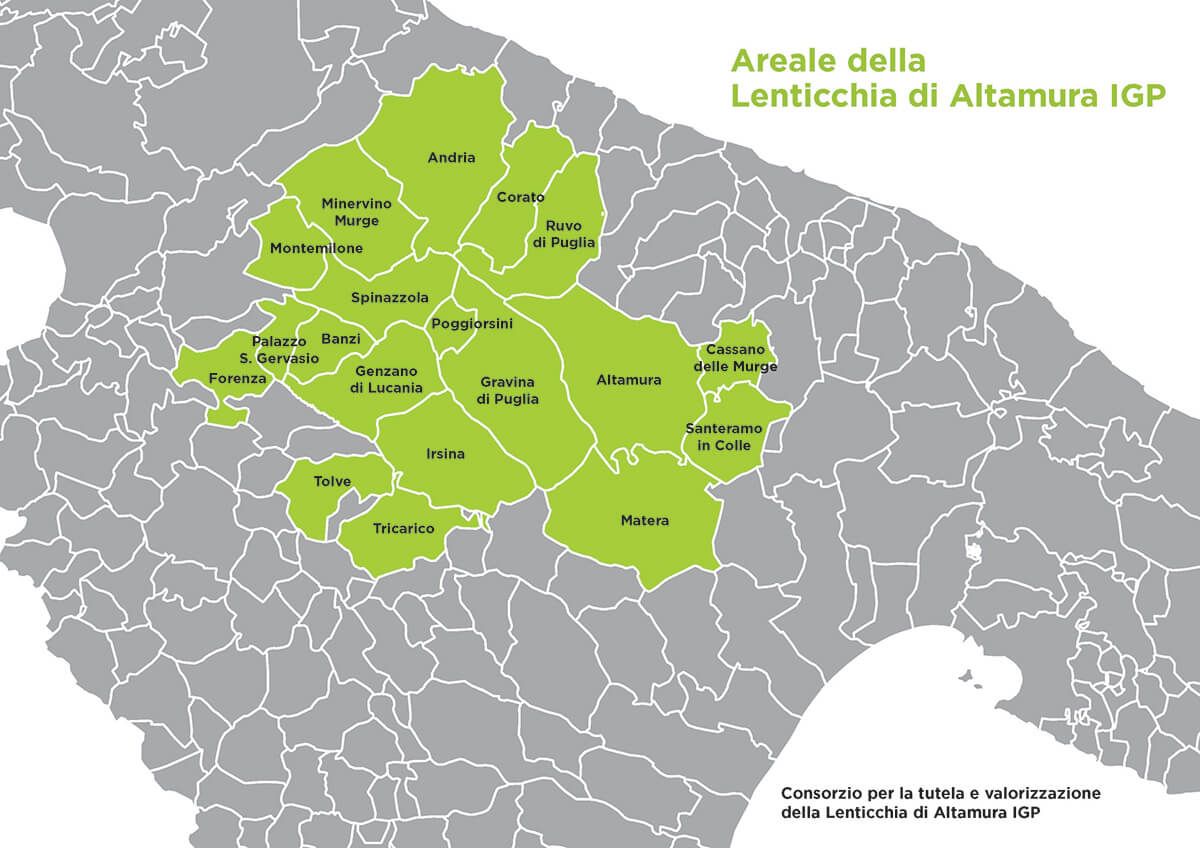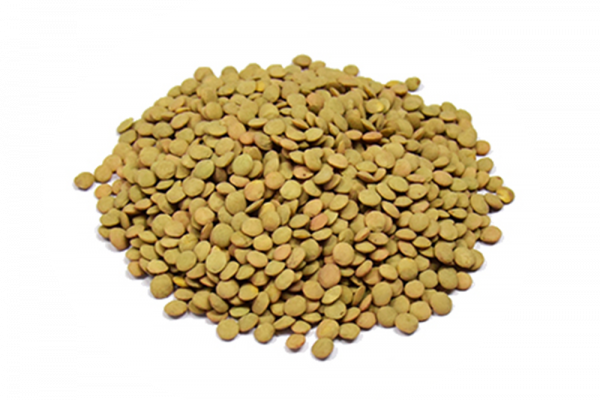From the seed to the green seedling. Then the white-glaucous flowers, then the fruit: the lentil./span>
The Protected Geographical Indication designates as dry lentils of Altamura the grain that has a color ranging from different shades of green to those of brown, with a flattened shape that, depending on its size, will be identified as large or small.
The Lentil of Altamura has peculiar characteristics compared to other lentils. In fact it has an excellent consistency and a high content of iron and protein, ease of cooking and above all a unique fragrance and flavor, conferred by the land of origin and difficult to find elsewhere.
This demonstrates the importance of the pedoclimatic vocation of the area of Altamura, of Alta Murgia, of the entire pre-murgian pit that embraces Matera and the karst territory of the ravines. Most of the lentil cultivation lands falls within the splendid Alta Murgia National Park.
Furthermore, each phase of the production process, starting from the product to be used for sowing, to the post-production cleaning process up to the packaging, must be monitored and carried out within the territory to which it belongs, precisely to guarantee quality and excellence of the whole process and especially of the final product, the Lentil of Altamura P.G.I.
On December 19, 2017, the Ministry of Agricultural, Food and Forestry Policies announced that the Implementing Regulation was published in the Official Journal of the European Union with the entry of the name Lentil of Altamura in the European register of protected geographical indications.
The lentil will be produced not only in the countryside of Altamura as its name suggests, but in the whole area of the Apulia- Lucan region which includes the towns of Altamura, Andria, Banzi, Cassano delle Murge, Corato, Forenza, Genzano di Lucania, Gravina in Puglia, Irsina, Matera, Minervino Murge, Montemilone, Palazzao San Gervasio, Poggiorsini, Ruvo di Puglia, Santeramo in Colle, Spinazzola, Tolve, Tricarico.


